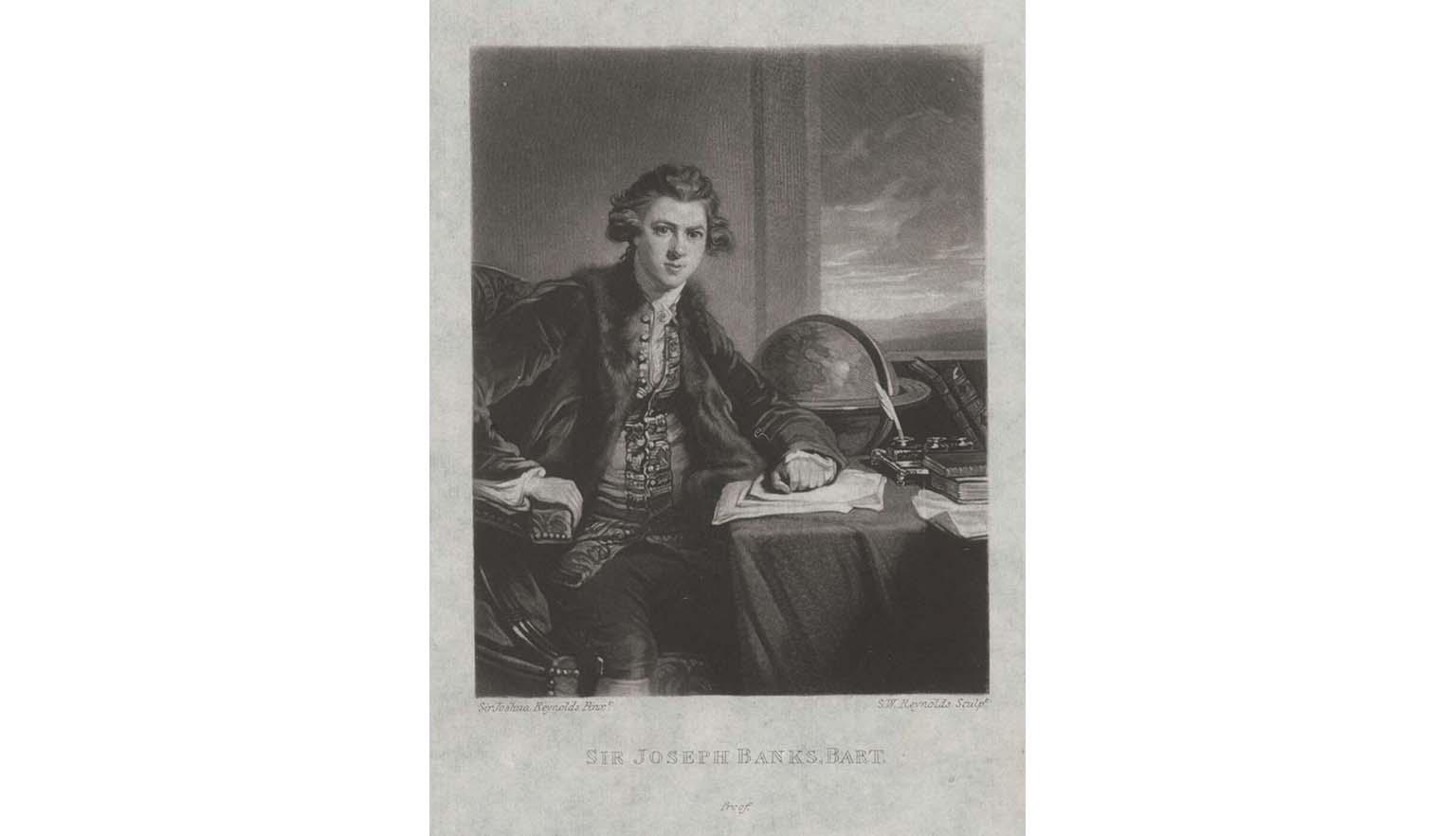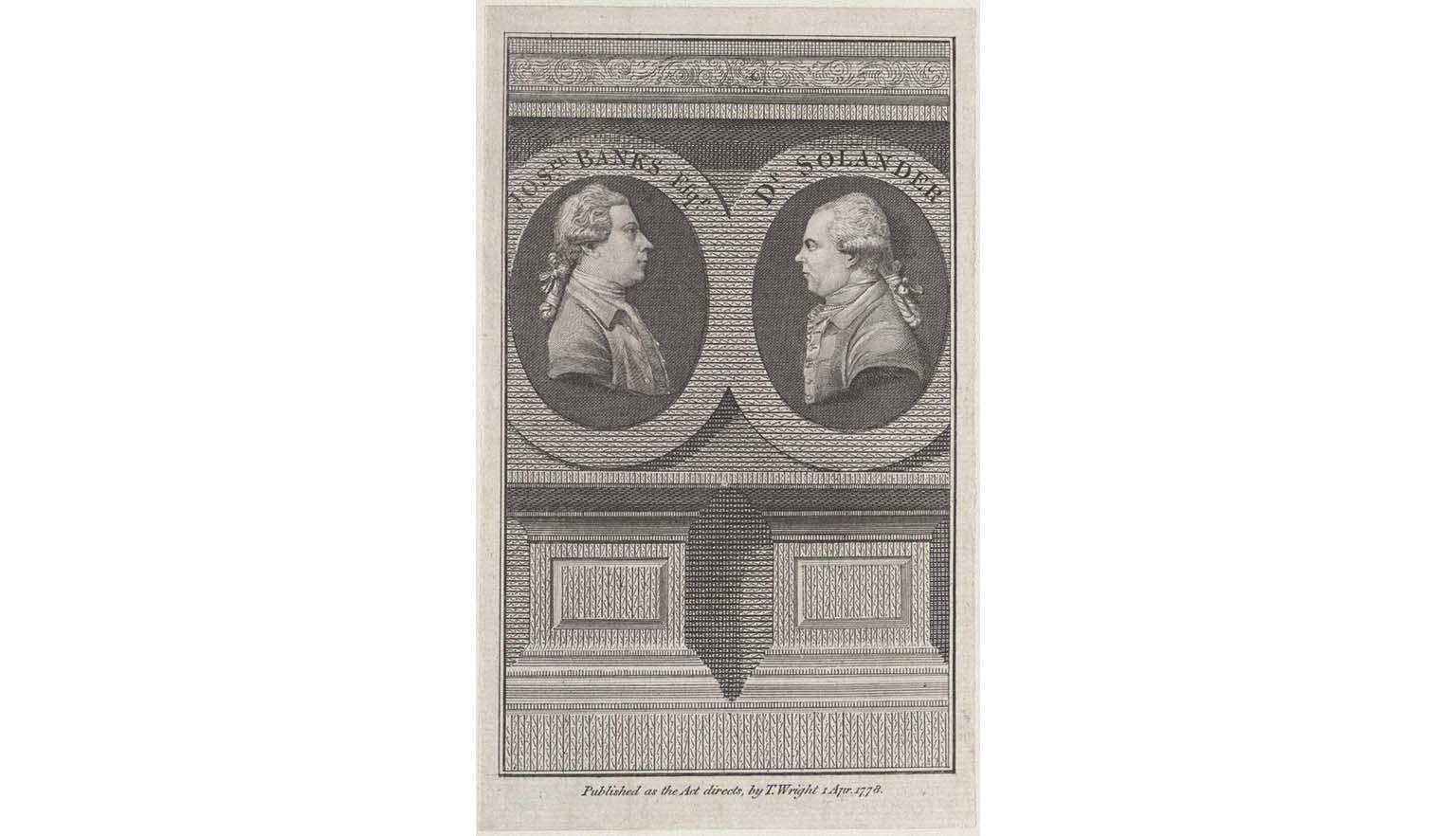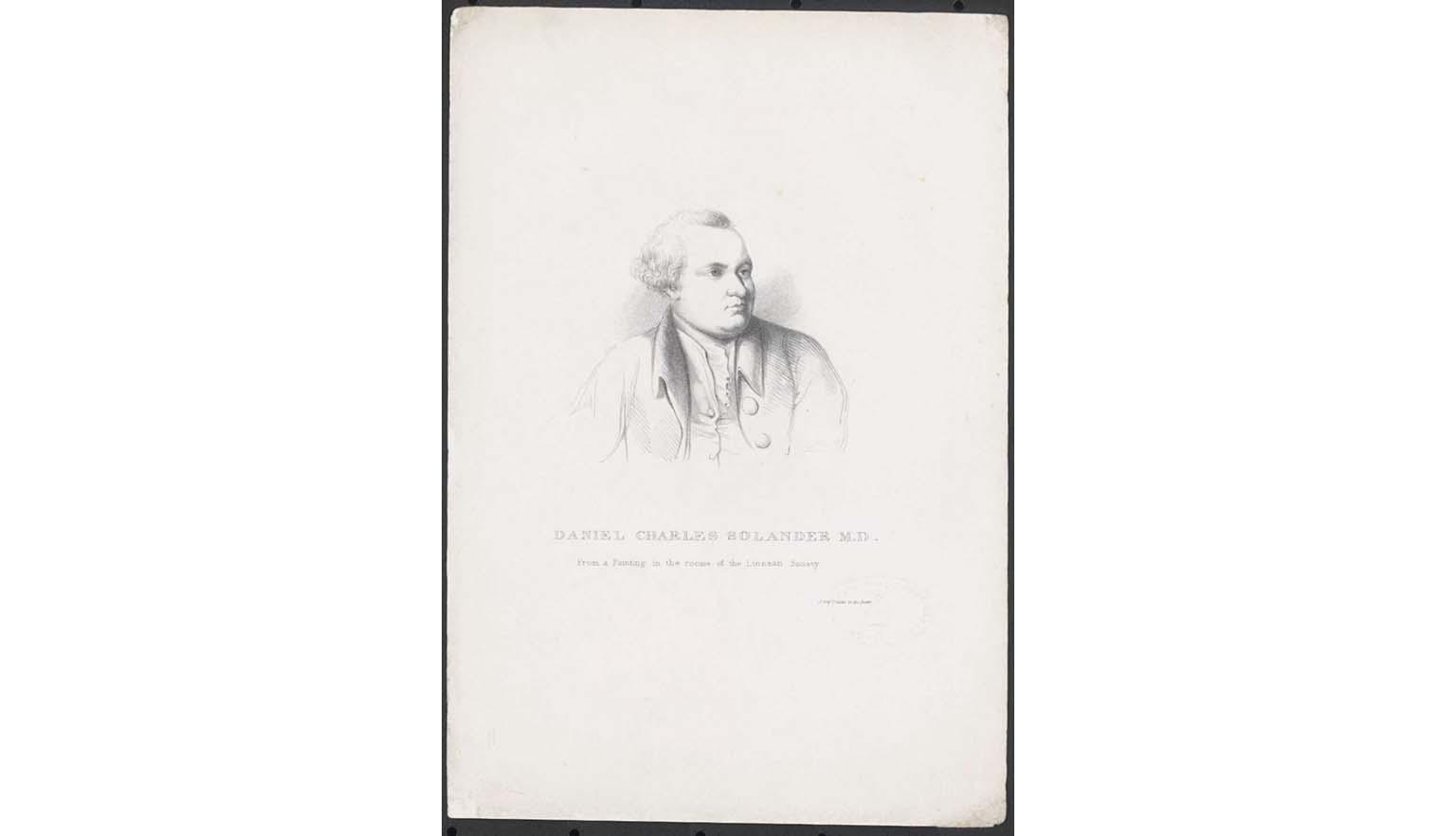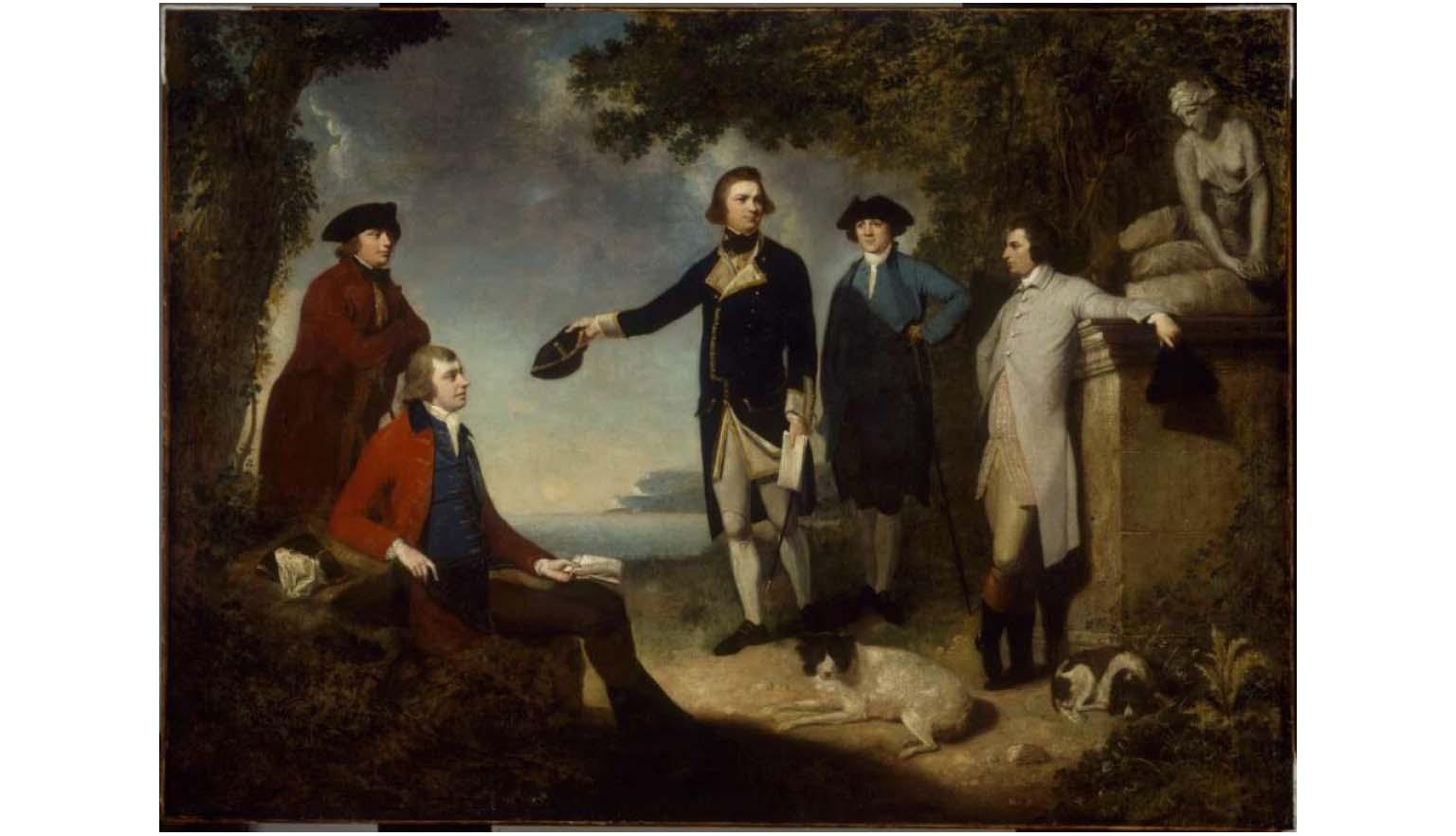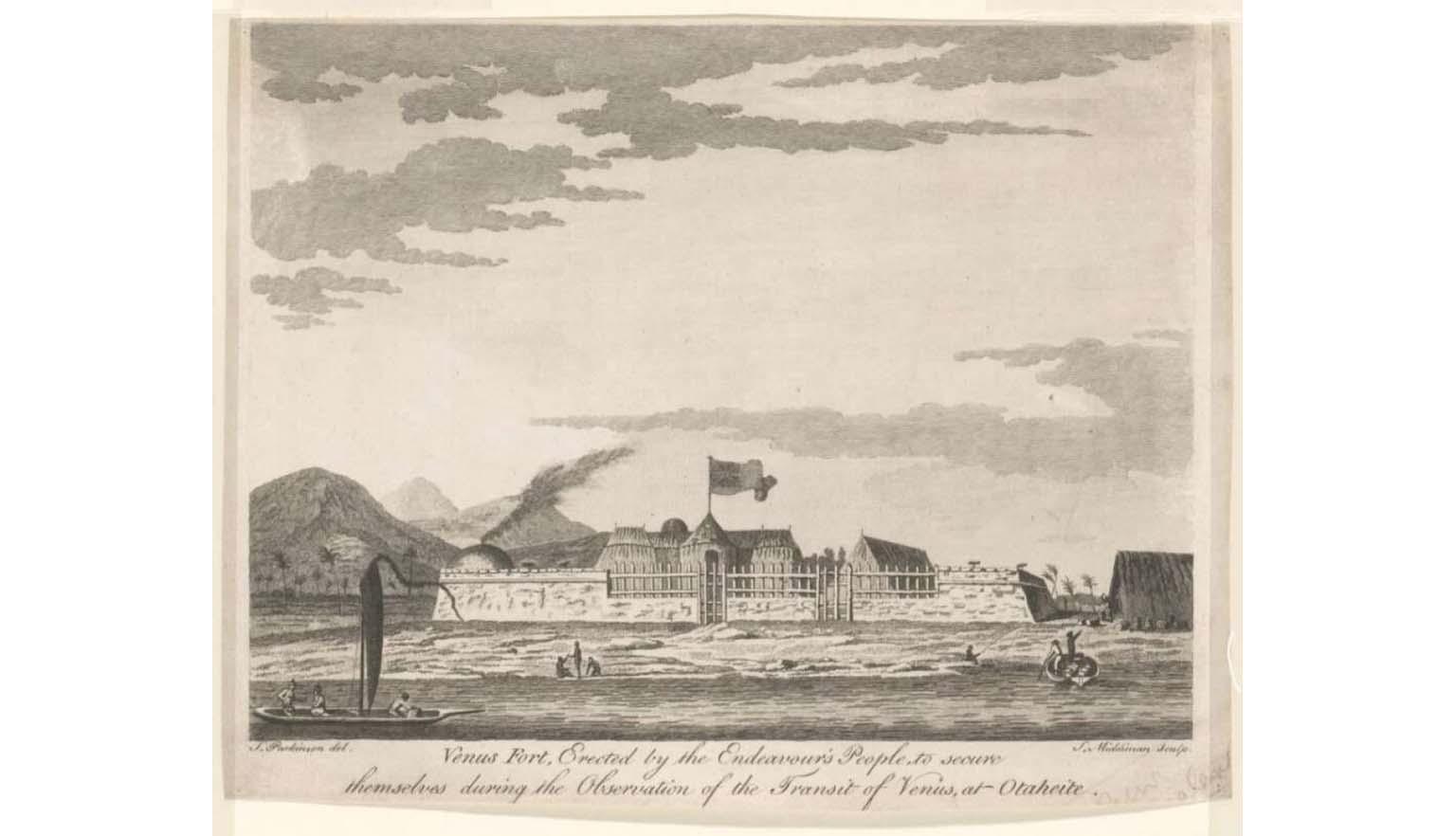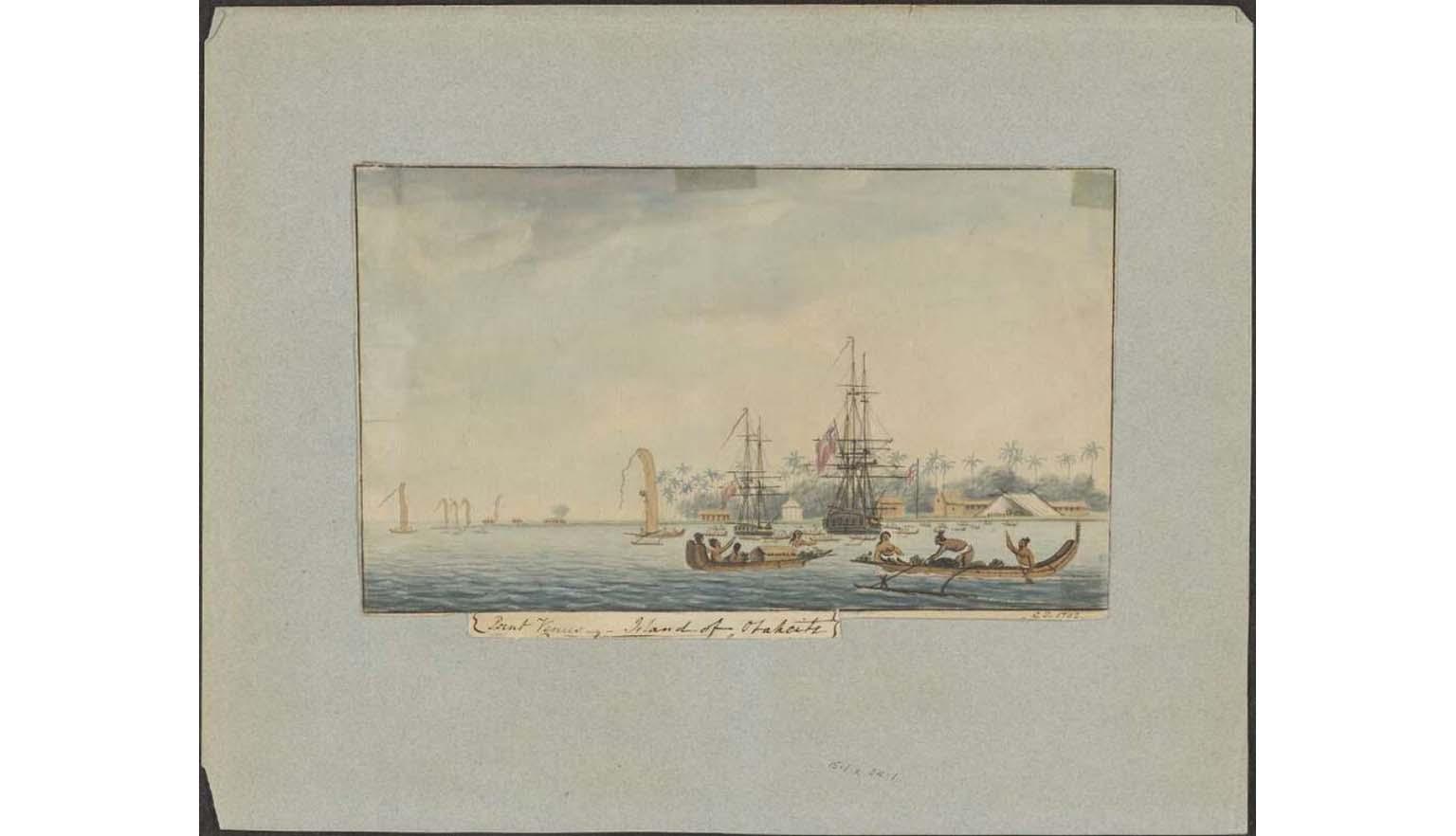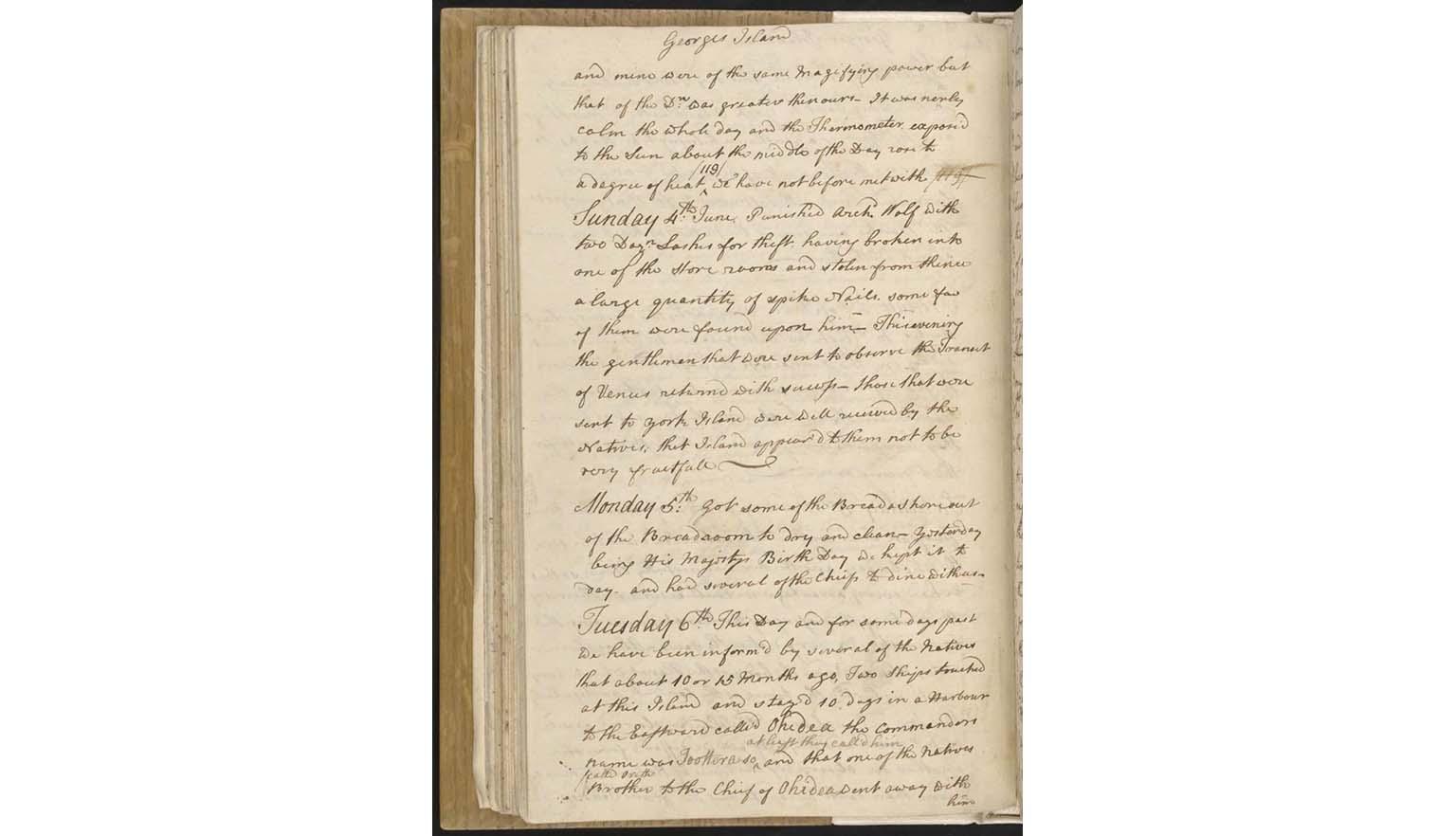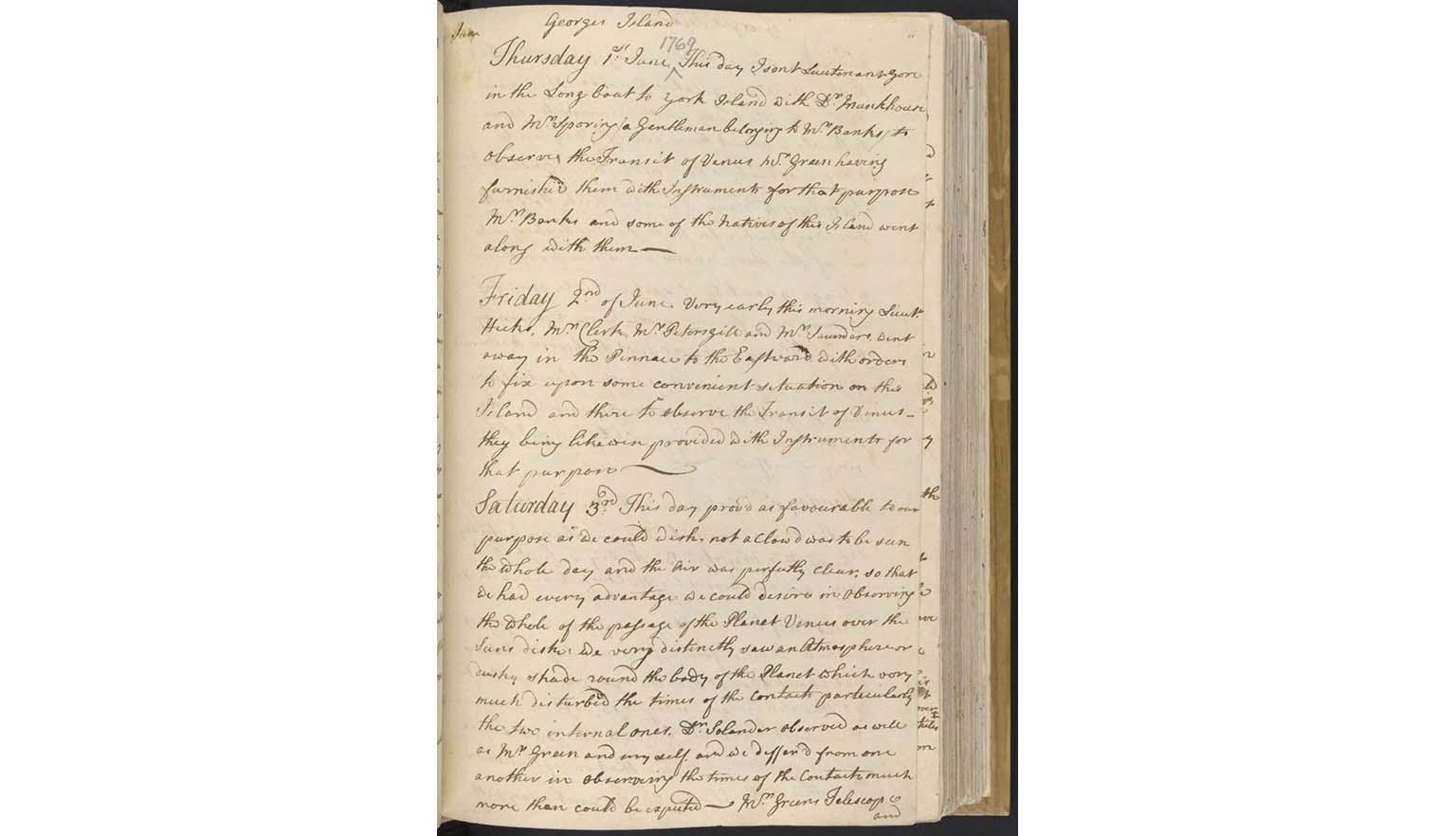Transit of Venus
Captain Cook: Explorer and Navigator
Captain Cook is a name synonymous with exploration. In the Pacific region, he is most remembered for his circumnavigation of New Zealand, the first such voyage made by Europeans; mapping of the Hawaiian Islands; and extensive charting of the north-west coast of Canada and west coast of what is now the United States of America. In Australia, he is best known for his first voyage. It was on this expedition that he mapped the east coast of Australia, from Point Hicks to far north Queensland. It was also on this voyage that he claimed the coastline he had mapped in the name of King George III of England.
Cook was 40 years old when he took command of the Endeavour. Officially, Cook had been instructed by the British Admiralty to observe the transit of Venus, at Otaheiti (now Tahiti) for the benefit of the Royal Society.
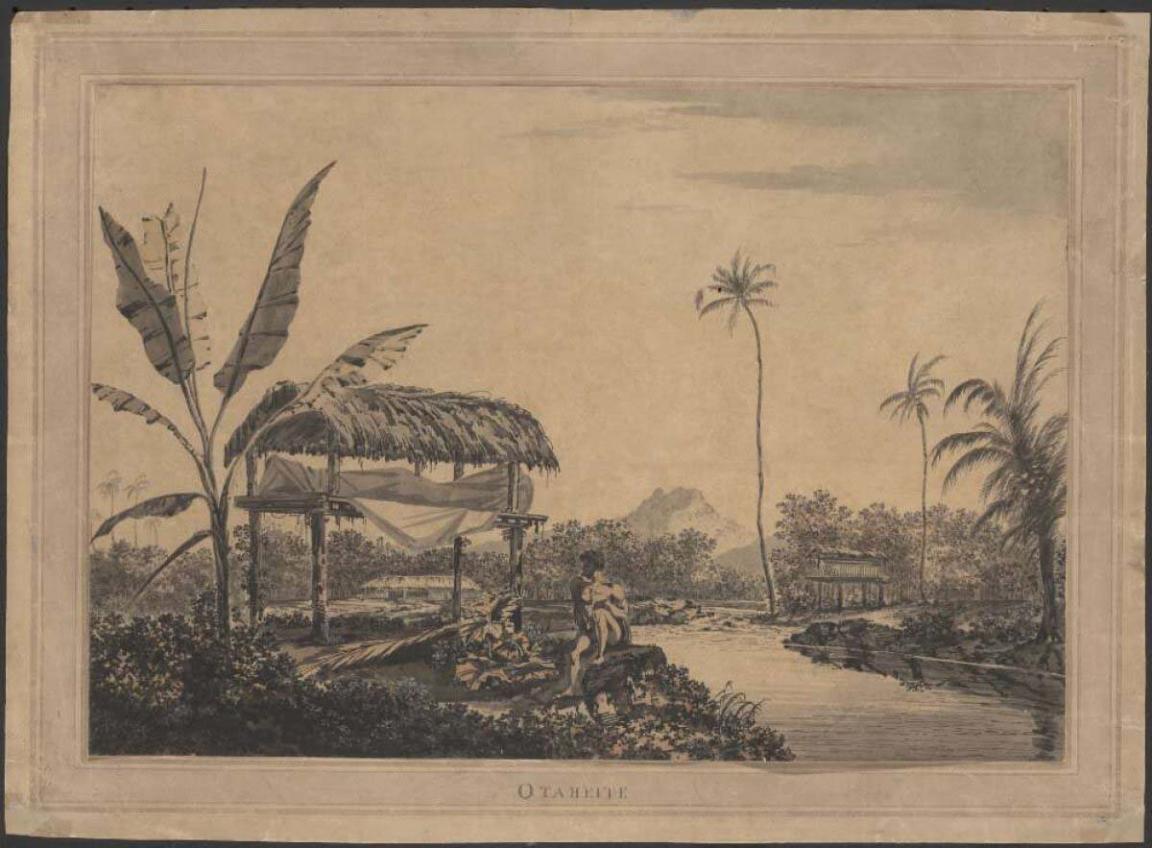
William Hodges, Otaheite, 1773, nla.gov.au/nla.obj-135152176
William Hodges, Otaheite, 1773, nla.gov.au/nla.obj-135152176
The Society was eager to have a record of the 1769 transit of Venus. This is a rare solar event, occurring every 120 years, during which the planet Venus crosses in front of the sun. The event comes in pairs 8 years apart. By noting the start and stop times of the transit from widely spaced locations on Earth, English astronomer Edmund Halley reasoned that scientists could calculate the distance to Venus using the principles of parallax. From these measurements, Halley hypothesised that scientists could then measure the scale of the solar system.
From the Society’s point of view, one of the most important passengers on the Endeavour voyage was 34-year-old Charles Green, astronomer, mathematician and chief observer of the transit.
The 35-year-old botanist Daniel Solander and wealthy 24-year-old Joseph Banks also applied together for a passage on board the Endeavour, and this application was received with great enthusiasm and support from King George III. As a result, Banks boarded the Endeavour with an extensive party (paid for out of his own pocket) that included himself, Solander, artist Sydney Parkinson, the naturalist Herman Spöring, four servants to assist in collecting specimens, and two dogs.
Arriving in Tahiti
Cook and his crew arrived in Tahiti almost two months before the transit. In the intervening weeks, Cook and his crew set up their equipment in various locations around the island. They also documented the flora and fauna of Tahiti and the customs of the Tahitian locals.
On the day of Venus’ crossing, Cook recorded in his diary that the weather was favourable for the viewing. However, he noted a haze or shadow around Venus. This made it difficult to accurately calculate the exact time of the crossing.
Cook, Green and Solander all recorded very different times but they all witnessed the same shadow as Venus passed into and out of the sun’s light. Ultimately, the data collected by Cook, his crew and 76 other scientists and observers around the world proved unusable.
However, Cook and his men were unaware of this until they returned to England. It was not until the 19th century and the advent of photography that astronomers were able to make precise calculations relating to the size of the solar system.
Saturday 3rd This day prov’d as favourable to our purpose as we could wish, not a Clowd was to be seen the Whole day and the Air was perfectly clear, so that we had every advantage we could desire in Observing the whole of the passage of the Planet Venus over the Suns disk: we very distinctly saw an Atmosphere or dusky shade round the body of the Planet which very much disturbed the times of the contacts particularly the two internal ones. Dr Solander observed as well as Mr Green and my self, and we differ’d from one another in observeing the times of the Contacts much more than could be expected — Mr Greens Telescope and mine where of the same Mag[n]ifying power but that of the Dr was greater than ours- It was ne[a]rly calm the whole day and the Thermometer expose’d to the Sun about the middle of the Day rose to a degree of heat / 119 / we have not before met with / 119/
